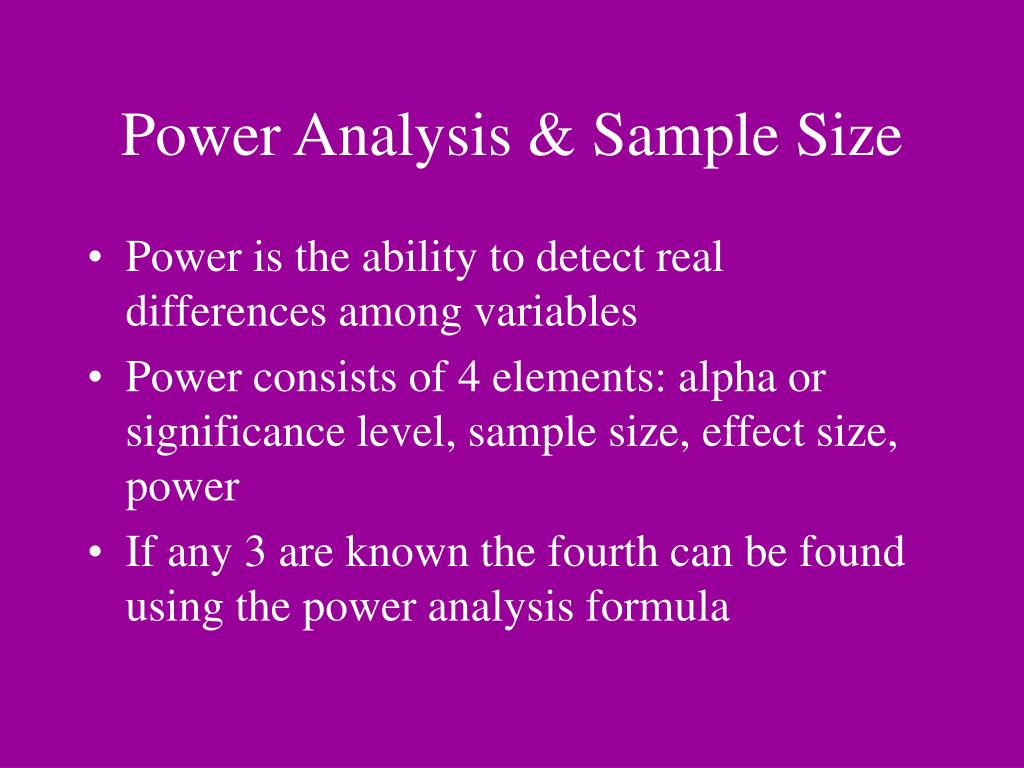
15.1 - Overview of the Crossover Designs.14.3 - A Special Case with Drug Combinations.14.1 - Characteristics of Factorial Designs.
Sample size power analysis trial#
13.3 - Contents of Clinical Trial Reports.13.2 and other means to access study results.12.11 - Adjusted Analyses of Comparative Efficacy (Phase III) Trials.12.7 - Model-Based Methods: Building a Model.12.6 - Model-Based Methods: Time-to-event Outcomes.12.5 - Model-Based Methods: Binary Outcomes.12.3 - Model-Based Methods: Continuous Outcomes.11.6 - Comparative Treatment Efficacy (Phase III) Trials.11.5 - Safety and Efficacy (Phase II) Studies: Survival Analysis.11.4 - Safety and Efficacy (Phase II) Studies: Trend Analysis.11.3 - Safety and Efficacy (Phase II) Studies: The Mantel-Haenszel Test for the Odds Ratio.11.2 - Safety and Efficacy (Phase II) Studies: The Odds Ratio.Lesson 10: Missing Data and Intent-to-Treat.9.8 - Monitoring and Interim Reporting for Trials.9.7 - Futility Assessment with Conditional Power Adaptive Designs.9.5 - Frequentist Methods: O'Brien-Fleming, Pocock, Haybittle-Peto.9.4 - Bayesian approach in Clinical Trials.Lesson 9: Treatment Effects Monitoring Safety Monitoring.8.9 - Randomization Prior to Informed Consent.8.7 - Administration of the Randomization Process.Lesson 8: Treatment Allocation and Randomization.6b.6 - Statistical Inference - Confidence Intervals.6b.5 - Statistical Inference - Hypothesis Testing.Lesson 6: Sample Size and Power - Part b.6a.10 - Adjustment Factors for Sample Size Calculations.6a.8 - Comparing Treatment Groups Using Hazard Ratios.6a.7 - Example: Comparative Treatment Efficacy Studies.6a.6 - Example: Comparative Treatment Efficacy Studies.6a.5 - Comparative Treatment Efficacy Studies.6a.3 - Example: Discarding Ineffective Treatment.6a.1 - Treatment Mechanism and Dose Finding Studies.Lesson 6: Sample Size and Power - Part a.5.4 - Considerations for Dose Finding Studies.5.2 - Special Considerations for Event Times.3.6 - Importance of the Research Protocol.3.2 - Controlled Clinical Trials Compared to Observational Studies.1.1 - What is the role of statistics in clinical research?.Adjust sample size requirements to account for multiple comparisons and the anticipated withdrawal rate.Use Poisson probability methods to determine the cohort size required to have a certain probability of detecting a rare event that occurs at a rate = ξ.



 0 kommentar(er)
0 kommentar(er)
